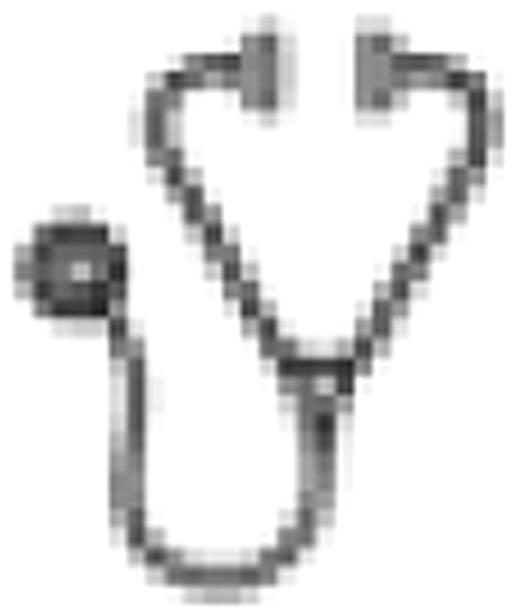Abstract
Abstract 1369
Single-agent cladribine (2CdA) given intravenously or subcutaneously (sc) is highly effective in Hairy cell leukemia (HCL). However, HCL patients are projected to progress in their life-span or, in a minority, are refractory and may benefit from other treatment strategies. Parameters predicting efficacy of (sc)2CdA in HCL are scarcely known.
In a national multicentre clinical trial (EudraCT code: ICGHCL2004) we prospectively sought parameters able to predict efficacy of sc2CdA in classic HCL requiring first treatment (1987 Consensus Criteria).
Clinical data and samples were collected centrally for diagnostic revision according to the WHO criteria and for molecular analyses prior to treatment. Tumor IGH and TP53 analyses or Genome-wide DNA profiling was performed in the cases with >10% or >50% hairy cells (HC) in the test sample, respectively (Forconi, Blood 2009). Patients entering the study received 0.5–0.7 mg/kg sc2CdA as a single course. Efficacy endpoints were response to sc2CdA, treatment free interval (TFI), relapse free survival (RFS), and overall survival (OS). Responses were assessed on month 2 and 6 after treatment and defined according to the 1987 Consensus criteria. Complete Remissions (CR) and Partial Remissions (PR) were rated as beneficial responses (CR/PR), while minor Responses (mR) and No Responses (NR) were rated as failures (mR/NR). TFI was measured in all patients from sc2CdA initiation to time of new treatment requirement. RFS was measured in patients with CR/PR from sc2CdA initiation to relapse. OS was measured from sc2CdA initiation to death.
Of 148 patients, 116 were males (78,4%). Median values were: age 52 years (range 30–83), splenomegaly below costal margin 2 cm (0-16), hemoglobin 11,8 (5-17 g/dL), PLT 77×10e9/L (14-255), WBC 2,7×10e9/L (0,7-48), HC 0,2×10e9/L (0-38). Serum B2microglobulin was twice above upper limit (B2M>2X) in 9/122 patients (7,4%), IGH unmutated (UM) in 7/62 (11,3%) and TP53 mutated (mutTP53) in 2/62 (3,2%). Onehundred-forty patients (94,6%) had a CR/PR (101 CR, 68,2%; 39 PR, 26,4%) and 8 (5,4%) a mR/NR (5 mR, 3,4%; 3 NR, 2%). Risk factors of sc2CdA failure were splenomegaly (p=.001, best-cutoff> 3 cm bcm by ROC and Youden's Test), WBC (p<.001, best cut-off >10×10e9/L), HC counts (p<.001, best cut-off >5×10e9/L), and B2M>2X (p=.013). In 62 patients investigated for molecular features, UM-IGH and TP53 were confirmed as risk factors for mR/NR (p<.001 and p=.011). Conversely, age, performance status, 2CdA schedule, lymphadenopathy, neutrophil, haemoglobin and platelet counts, prior transfusions, time from diagnosis to treatment, Jansen score, LDH, marrow infiltration and hairy cell index failed to predict response. After a median follow-up of 37,5 months (range 12–67), 5 year TFI, RFS and OS were 67%, 71% and 94%, respectively. Causes of death were one infection in progressive refractory disease, 2 cardiac events and 3 second tumors. By Kaplan-Maier estimates, risk factors of shorter TFI at diagnosis were splenomegaly (p=.007), WBC>10×10e9/L (p<.001) or HC>5×10e9/L (p<.001), UM-IGH (p<.001), and TP53 disfunction (p=.002). By Cox multivariate analysis (covariates: HC>5×10e9/L, spleen>3cm, UM-IGH and mutTP53), UM-IGH (HR=8.1, 95%CI 1.7–38.1, p=.008, median TFI=8.5 months), high HC (HR=6.9, 95%CI 1.5–31.6, p=.012, TFI=27,4 months) and splenomegaly (HR=3.7, 95%CI 1.1–12.8, p=.039, TFI=49,3 months) scored as independent risk factors. Quality of response also predicted risk of short TFI (NR=mR>PR>CR, p<.001). In the patients with beneficial response, univariate analysis of clinical parameters identified WBC>5×10e9 (p=.016) and PR (p=.001)as risk factors of short RFS. Cox multivariate analysis revealed PR as the sole independent risk factor of relapse after a median of 46 months (HR=4.5, 95%CI 1,7-12,3, p=.003). 2CdA dose schedule was among other factors that did not associate with TFI or RFS.
This data confirm that sc2CdA has potent activity in HCL. Tumor UM-IGH status, splenomegaly, high HC count (or leukocytosis) are confirmed as independent risk factors of treatment failure and rapid progression. RFS analysis identify PR as the sole independent factor of relapse risk in the patients initially responsive to sc2CdA. This analysis may have important implications for the selection of HCL patients that will require treatments alternative to single-agent 2CdA.
No relevant conflicts of interest to declare.

This icon denotes an abstract that is clinically relevant.
Author notes
Asterisk with author names denotes non-ASH members.

